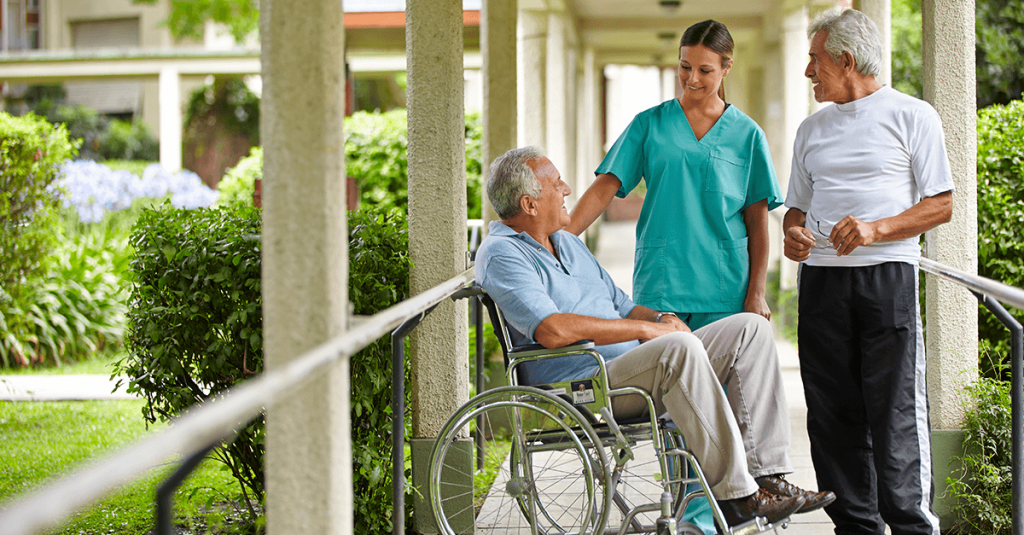A Discussion of Nursing Homes in America
Written by: Angela Zhang | Edited by: Nathan Hahn

Skilled nursing facilities, more commonly referred to as nursing homes, are long-term healthcare institutions often populated by elderly and hospice patients, many of whom have dementia or other conditions that require special care, and extra attention their families may not be able to provide. They are by no means an uncommon phenomenon; in 2020, the CDC reported that 1.3 million people were residing in one of 15,300 nursing homes across America, 83.5% of whom were ages 65 and up. As an EMT working in interfacility transport, they’re where the majority of my transports go, but amongst EMTs, they’re often abhorred for their poor patient care. After seeing so many in such poor conditions for myself, I began to investigate the phenomenon of America’s systematic institutionalization of its elderly.
One thing I can’t help but notice every time I walk into a nursing home is how lonely they often feel. Many residents share a room with others, people they don’t know, and many nursing homes host little, if any, community events for residents to get to know each other. Family visits also tend to be limited, understandably so; often, residents are in the nursing home because their families do not have the time or resources to care for them at home. This phenomenon is not just anecdotal; studies suggest that feelings of loneliness are extremely pervasive in nursing homes, with one study finding that 56% of nursing home residents without cognitive impairment experienced loneliness. There’s no question that nursing homes should invest in community-building events for their residents as a piece of improving residents’ quality of life, and indeed, such changes have been linked with improved resident mental health, psychological well-being, and overall quality of life.
Another commonly cited issue with nursing homes is the understaffing and high rates of turnover of staff at many nursing homes, often factoring into other issues such as staff working outside their scope, missed diagnoses, bedsores, falls, and subsequent physical injuries. They can be especially debilitating for the elders and are the very reasons we often transport these patients. These statistics are reflective of poor working conditions, low salaries, and fewer opportunities for career advancement. In addressing many of these concerns, in June 2024, the Centers for Medicare & Medicaid Services, the governmental organization regulating nursing homes, updated their staffing requirements. These requirements include policies like a minimum of 3.48 hours of care per resident and a 24/7 RN on call in case of crises, necessitating an increase in staffing for many institutions. While the legislation has been praised for raising standards from prior laws, it has also been criticized for still being below the minimum standard proposed by the literature.
Perhaps all of these issues ultimately come down to the profit model of nursing homes. Despite the issues of understaffing and nursing homes’ complaints of underfunding, a study by the National Bureau of Economic Research suggests that in 2019, 68% of nursing home profits secretly ended up in the pockets of owners by artificially inflating the costs of healthcare services. Another study by the National Bureau of Economic Research concluded that institutionalization in for-profit nursing homes leads to more adverse outcomes compared to nonprofit or government-run institutions. The authors suggested that a policy designed around aligning the profit incentives of investors with the quality care and affordability incentives of residents and their families could positively impact patient outcomes and also suggested limiting private equity buyouts of nursing home companies in the first place.
This isn’t to say that nursing homes need to be abolished. Many other countries around the world have nursing home systems for their elderly, and depending on an individual’s circumstances and conditions, nursing homes can provide a safer, higher-scope environment than in-home care. However, the current state of nursing homes in America leaves much to be desired, especially considering that they are often serving individuals nearing the end of their lives, a passing that deserves the dignity and peace that the current structure of these institutions is all too often failing to provide. After my experience, I know that as my parents get older, I will do everything I can to avoid placing them in a nursing home– but that is a decision for each individual to make on their own, and often also a privilege that is not available to every family. I hope that by the time we reach that age, we can have systematically changed the fundamental design and profit motive of nursing homes, turning them into an option for our elders as opposed to a last resort.
Sources:
- https://www.cdc.gov/nchs/fastats/nursing-home-care.htm
- https://pubmed.ncbi.nlm.nih.gov/20947083/
- https://www.ncbi.nlm.nih.gov/books/NBK584652/
- https://pmc.ncbi.nlm.nih.gov/articles/PMC7992115/
- https://www.npr.org/sections/health-shots/2024/04/24/1246628171/nursing-home-staffing-final-rule-medicare-medicaid
- https://www.nber.org/system/files/working_papers/w32258/w32258.pdf
- https://www.nber.org/system/files/working_papers/w28474/w28474.pdf

